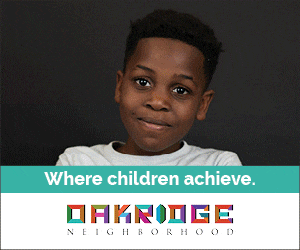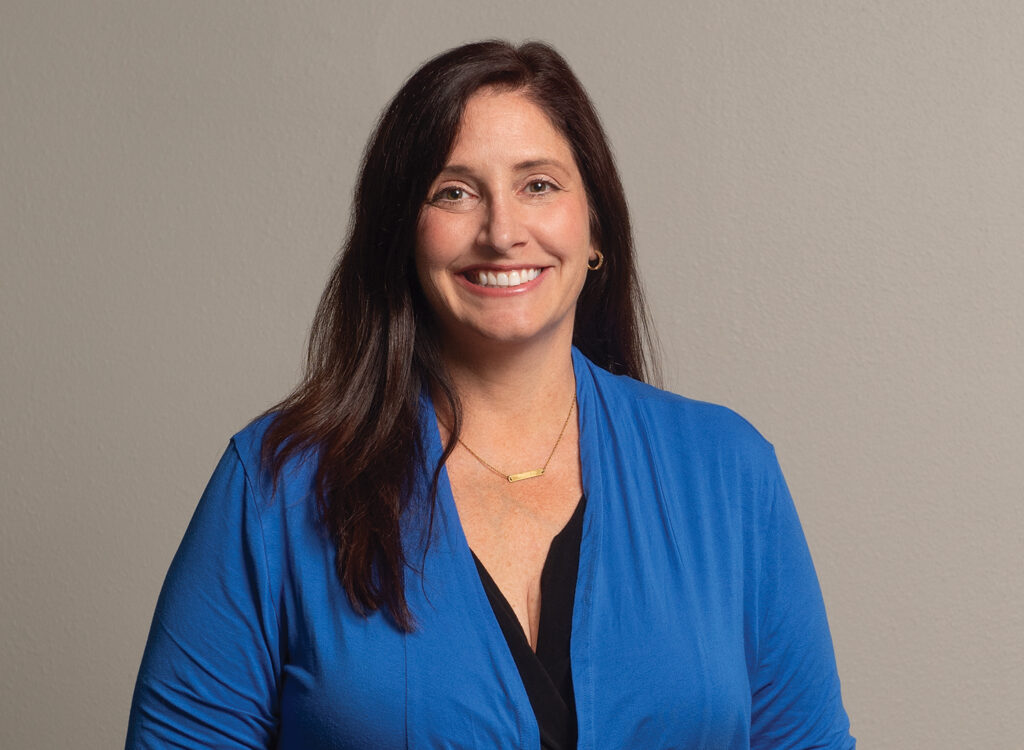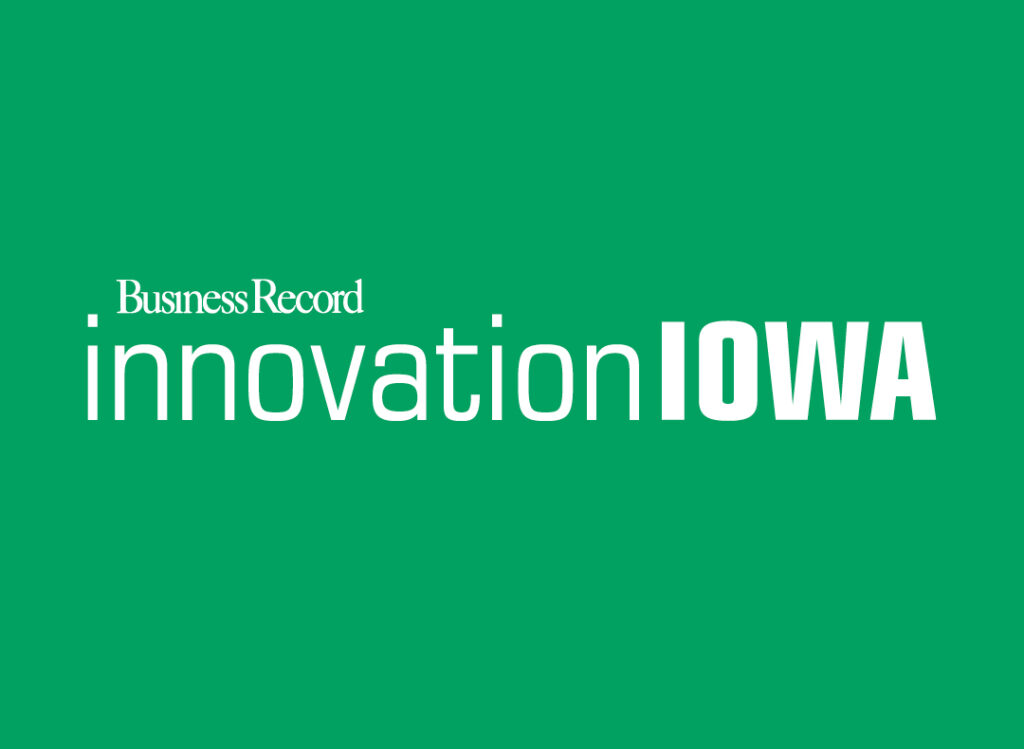Beyond bootstrapping
Can Iowa’s Black entrepreneurs gain more access to lending programs?

JOE GARDYASZ Oct 15, 2020 | 3:21 pm
14 min read time
3,417 wordsBanking and Finance, Business Record Insider
It wasn’t long after Deshara Bohanna began taking her handmade wreaths door-to-door to sell in her north Ankeny neighborhood that she knew her ornately crafted designs resonated with eager customers.
“The reception was so positive that in less than two weeks from that point, I knew that it was a big opportunity,” said Bohanna, who this month celebrates her fourth year in business as Design Fetish by Deshara LLC.
Within that relatively short time, Bohanna has gained a customer base that has tied a bow in the business-to-business market through relationships with major health care systems, hotels, restaurants, real estate firms and other corporate clients across Central Iowa and into several other states as well. She has more recently broadened her offerings to chic indoor and outdoor planters that patrons enjoy at top-tier destinations like Marriott hotels and Fleming’s Prime Steakhouse & Wine Pub.
Bohanna’s path to success hasn’t been a smooth road. As a Black woman and a single mother working a full-time job to support her three young children while launching her business, she defied long odds to build a thriving small business from scratch. More remarkable still, she has been able to bootstrap the growing venture without the benefit of conventional banking or SBA-backed borrowing.
A year into the venture, she moved the operation from her home to a small studio space on the fourth floor of Mainframe Studios at 900 Keosauqua Way in Des Moines. She’s now preparing to expand into a larger leased space in Mainframe Studios as demand for her decorative artwork accelerates.
Design Fetish is one of about a quarter-million new U.S. small businesses that started up in 2016, according to data tracked by the U.S. Small Business Administration Office of Advocacy. Statistically, fewer than two-thirds of those small businesses are expected to make it to their fifth year — and that’s a pre-COVID-19 projection.
Nationally, minority-owned businesses like hers, particularly Black-owned, lag in many measures of performance compared with their white-owned peers. The disparity can be attributed to a number of built-in obstacles that Black entrepreneurs face, experts say.
According to the 2019 Report on Minority-Owned Firms conducted by the Federal Reserve Bank of Atlanta, while 55% of white-owned small businesses were profitable at the end of 2017, that figure drops to 46% for Black-owned firms. Also, a larger share of white-owned businesses — 58% — reported revenue growth, compared with 49% of Black-owned firms.
Design Fetish is thriving, even amid the pandemic, despite launching in a state that Black Enterprise magazine in 2014 panned as the worst in the nation for Black entrepreneurs.
The magazine cited a study conducted by Bloomberg Businessweek that compared the ratio of minority-owned businesses in each state relative to its population size. Leading the pack in that analysis for the best states was Florida, with one minority-owned business for every 11 minority residents. Falling at the bottom was Iowa, which at the time had one minority-owned business for every 43 minority residents.
As social movements in 2020 spotlight long-standing disparities for Black communities, some Iowa business leaders believe that it’s possible to at least somewhat smooth a bumpy small business playing field for African American entrepreneurs.
The Black Lives Matter protests have created greater awareness that lenders need to go the extra step to treat minority borrowers fairly, said Jim Plagge, president and CEO of Bank Iowa. Plagge is among more than 100 Des Moines business leaders who were the first to sign the CEO Commitment to Racial Diversity pledge spearheaded recently by the Greater Des Moines Partnership.
“There is certainly a heightened desire to reach out to the minority population to help them reach the success that the majority population has achieved,” Plagge said. The owners of the family-owned community bank are “very entrepreneurial and very socially conscious,” he said. “Treating every client equally and fairly is certainly a value.”
Plagge said he’s familiar with the Federal Reserve studies that have identified Black business owners typically being turned down for loans at twice the rate of white-owned businesses.
“We certainly can’t discount the idea that discrimination played a role in that,” he said. “And there has been in the Black community a lack of intergenerational wealth and a lack of confidence in the banking industry. There are certainly some disturbing factors that contribute to that.”
On the private lending side, Bank Iowa is making efforts to reach out to assist potential Black homeowners with mortgage loans, and to help them through its involvement with Habitat for Humanity. Through Habitat for Humanity the company is active in volunteering and donating as well as purchasing Habitat mortgage loans and holding them in its portfolio, he said.
“On the commercial lending side, it would be more of a function of making sure that when we do have the opportunity, that we’re making the extra effort.”
Jayne Armstrong, state director for the U.S. Small Business Administration in Iowa, said the state compares poorly with other markets for lending to Black-owned businesses.
“Definitely there is a problem,” she said. “I’ve been here for five years, and I’ve been the SBA director in four other markets [that performed better]. I definitely see it as a problem, but I also see people stepping up to create more opportunities for Black small business owners to be involved in the small business community.”
One of the major gaps that needs to be addressed is a scarcity of financial institutions that operate as Community Development Financial Institutions in Iowa, she said. With assistance through the U.S. Treasury’s CDFI Fund, CDFIs have a mission of expanding economic opportunity in low-income communities by providing access to financial products and services for small businesses and residents.
“We have very few [CDFIs], and a lot of the ones we have focus on the housing side, not small business,” Armstrong said. “I know that different groups are looking at getting into CDFIs,” she said. “Having worked in other states, I know that is something that we need to work on in Iowa.”
Armstrong was among numerous people whom Bohanna met as she was getting Design Fetish off the ground. Bohanna was an eager student, soaking up everything she could about starting a business.
“She has networked her way across this town,” Armstrong said, “and has just been a sponge on getting resources and in using those resources.”
The Iowa Center for Economic Success was an early stop for her, Bohanna said. By participating in the center’s Dream Builders course, she gained a lot of knowledge about resources available to entrepreneurs.
She was unable to find a good banking relationship, however. “I did reach out to a couple of banks, once I decided to go full time, but I ended up not taking those avenues and I began searching for grants and funding,” Bohanna said.
She even buttonholed Gov. Kim Reynolds at an event when Reynolds was running for election. Reynolds told her there were “all kinds of funding” available, Bohanna recalled, “but when I called the people she referred me to, they said, ‘I don’t know what [Reynolds] was talking about.’ ”
“So I did have trouble finding funding to be able to reach the next level of my business,” Bohanna said. “But I just decided that I would continue trading forward, and set goals, and just allow it to become what I needed it to be. It would have been a lot easier if I would have had funding because, as it relates to inventory and travel to different states, … I can access better materials with better pricing and wholesale.”
Another Des Moines-based Black business owner, Terrence Thames, said access to capital has been — and remains — a challenge for his creative ad agency that he launched nine years ago. Cocoa Creative Agency now employs a mix of nine part-time and full-time contract employees that handle video production, graphic design and photography projects for a broad array of clients.
“We are creating jobs, and we are growing and adding a lot of value to corporations, agencies and business partners that we have,” Thames said. “Our future is bright. With COVID, we had an initial decline, but then a sharp rebound. We’ve also been helped by a lot of entrepreneurs who have seen value in what we do, who have been very helpful in providing references.”
Thames launched the business while he was working full time as creative director at Drake University, and he has been running his business full time for the past four years. He started doing video production work for his church when he was 16, and later built his experience working in the video production departments of Iowa City and the University of Iowa.
“I don’t come from a background of entrepreneurs, at least not where those experiences could be passed down,” Thames said. “I didn’t have a lot of access to wealth in starting my business. There wasn’t a $10,000 or a $20,000 loan that my family could give me. That was not a part of my story or a part of my community. All that I got came essentially through bootstrapping.”
While there are some microlending programs that can provide $1,000 or $5,000 loans, and the state’s Targeted Small Business Program, there are definite gaps in how banks are lending to Black-owned businesses. Also, many Black business owners may not realize they are eligible for SBA-backed loans, Thames said.
“Access to capital can give you a cushion to experiment, room to fail and to still feed your family if you do fail,” he said. “In Central Iowa, there’s really not a large economy that is going to cater to the needs of people of color. Because of that, what we see are systemic barriers there.”
More communities and the state government need to step up to mandate minimum levels of purchasing from minority-owned businesses, a step that federal contracts already require, Thames said.
As an example, “I’m in the creative field. If there’s a large ad agency in town and they get a government contract to do something for $1.5 million, are they going to subcontract some of that work out to a minority business? They might — but probably not. I think because we do not have those [mandates], we continue to see those minority-owned businesses not getting ahead.”
The SBA’s Armstrong said connecting more business owners of color to existing resources will be an important part of creating a more equitable lending environment.
“If anything good comes out of COVID, it’s a recognition of how important small business is to the community,” she said. “But a lot of these businesses don’t have the same access to the same resources. We have to do everything we can as a community to make that connection.”
She echoed Thames’ sentiment of bringing more intentionality to the process. “A lot of our corporations have supplier diversity programs,” she noted. “I think we really need to look at what our companies’ purchasing policies are, and are they purchasing from minority-owned businesses?”
Financial institutions in Iowa also have room for more progress in increasing their diversity, she said. “The lending community has diversity, but not on the commercial lending side. The commitment is there, don’t get me wrong. But we also need to make sure that our infrastructure looks like the communities we’re trying to represent.”
Armstrong, who serves on the diversity and inclusion committee of the West Des Moines Chamber of Commerce, points to that organization as a role model. “They’re trying to create an environment where they’re recruiting more minority-owned businesses to West Des Moines, and they’ve gained 10 new businesses.”
She’s excited about a Black and Brown Conference aimed at entrepreneurs of color that’s now being planned for April 2021.
“The bottom line is, we have to create an environment for creating legacy wealth within families and encouraging more Black entrepreneurs to start businesses — and that they’re tapping into the same resources in the same way.”
Bank Iowa’s Plagge acknowledged that while his bank attempted to reach new customers while the federal Paycheck Protection Program loans were being made several months ago, the program wasn’t used by as many businesses owned by people of color as it could have been.
“I think the obstacle there was that they simply didn’t have that borrower-lender relationship to apply for those loans,” he said. “We did over 900 of those loans, so it was a substantial effort.”
Plagge said Bank Iowa leaders have been discussing how to prepare for a second round of stimulus loans, to reach more businesses that haven’t accessed that assistance. With a purpose statement that begins with “empower people,” the bank is heavily focused on helping to achieve success for all people, he said.
“Blacks and minorities specifically need a hand up — we certainly want to contribute to their success and be a part of it.”
Minority-owned firms make up 20% of all employer businesses
According to the most recent Annual Survey of Entrepreneurs by the U.S. Census, there were more than 1 million — 1,054,575, to be exact — minority-owned businesses in operation as of 2016. If you count minority-owned sole proprietors, there are about 8 million total minority-owned firms. Those minority-owned businesses with employees, which make up 20% of all employer businesses, collectively employed 8.7 million workers with a total annual payroll of $280 billion.
As of 2017, the latest data available, Iowa small businesses employed 649,796 people, or 48% of the state’s private workforce. About 12% of all working-age men in Iowa are self-employed, while about 7% of working women are self-employed. As a group, about 2% of African-American men in Iowa are self-employed; about 4% of African-American women in Iowa are self-employed, according to the Office of Advocacy’s 2020 Small Business Profile for Iowa.
A smaller percentage of Black-owned businesses (46%) were profitable at the end of 2017 compared with white-owned firms (55%).
A larger share of white-owned firms reported growth in the number of employees (37%) compared with Black-owned firms (31%).
A larger share of white-owned firms reported revenue growth (58%) compared with Black-owned firms (49%).
A larger percentage of Black-owned firms, 78%, reported financial challenges, compared with 62% of white-owned businesses.
The Directors Council is using the model of a small-dollar loan pool started in the early days of the pandemic as the framework for forming a new Community Development Financial Institution in Central Iowa.
“We’re in the early stages of forming our own CDFI,” said Teree Caldwell-Johnson, CEO of Oakridge Neighborhood and board chair of the Directors Council. The latter organization is a nonprofit coalition of Black leaders collectively dedicated to improving the conditions of the individuals in the neighborhoods they serve in the core urban areas of Des Moines.
“What we’ve found is that individuals don’t have access to resources if an emergency happens, so that they can keep their jobs,” she said. The Directors Council received some seed funds for the small-dollar loan pool, and has begun making loans to individuals through the Des Moines Metro Credit Union. “That really keeps them off of the predatory lending wheel that we know can be pretty disastrous for folks.”
There are currently about 1,000 certified CDFIs nationwide, with a mission of expanding economic opportunity in low-income communities by providing access to financial products and services for small businesses and residents. In fiscal 2019, CDFI Program awardees financed more than 19,000 businesses nationwide, according to the Treasury Department, which operates the CDFI Fund.
Financial inclusion is one of several broad areas targeted in the Directors Council’s One Economy report. One of the strategies to help improve financial inclusion is to “offer an array of services to help low-income individuals and families to start new businesses, grow existing businesses, and provide resources for them to be successful, valuable businesses for their communities.”
Measurable goals listed in the report’s executive summary include:
- A 5% decrease in the number of unbanked and under-banked African Americans by 2025.
- A half-percentage point increase in the Black loan approval rate by 2025.
- A 2% increase in Black-owned small businesses by 2025.
Much of leveling the playing field has to do with educating people on both sides of the lending table, Caldwell-Johnson said. Access for people of color should be no different than for anyone else who is qualified and is seeking a loan.
“It’s also creating a stronger framework for people of color to understand what’s required. But also, don’t put another barrier in my way. … How do we create a much stronger business acumen [for potential business owners], but once they have done what they are supposed to do, do not create another hurdle where they just feel like this isn’t going to happen for me.”
Caldwell-Johnson said she’s excited about the opportunities that the One Economy work has created “and the hope that our community will respond to help minority-owned businesses.”
“I’m also excited about the potential for the loan products and the CDFI, and recognizing the value that minority-owned businesses can add — when we think about investing in ways that can make a difference for those individuals,” she said.
Emerging nonprofit Iowa C.O.R.E. aims to bridge gaps for minority-owned businesses
When it comes to improving the climate for Black-owned businesses in Iowa, now is not the time to reinvent the wheel, said Matthew Gilbert, a Des Moines attorney who juggles his private law practice with consulting and a personal training business and numerous roles on community and statewide boards.
Rather, just look to what some successful communities are accomplishing. “We need to magnify what these communities are already doing,” Gilbert said.
The Drake Law alum recently formed Iowa C.O.R.E. Inc., (Center for Opportunity Resources and Equity), a nonprofit charitable organization whose mission is to “strengthen giving practices in Iowa while promoting the collective impact of minority leaders, workers, indigenous populations, and underrepresented communities of color.”
The organization aims to help bridge the gaps in advocating for minority-owned businesses, as well as to educate Iowans about the disparities that they face.
Gathering data will play an important role, Gilbert said. Small-dollar loans have been important and need to increase, but those dollars need to be accompanied by data.
“We need to actually understand the comparison of the spend for minority-owned businesses — all across the infrastructure — for Black and brown industries in Iowa.”
While the Economic Recovery Task Force that was convened by Gov. Kim Reynolds has identified some good practices, Gilbert noted that it did not engage ethnic advocacy groups such as the Iowa NAACP or LULAC, a Latino advocacy organization. He acknowledged that may have happened because it was assembled quickly in an emergency environment. The task force’s report is due to the governor by the end of the year.
“So I will be patient to see what comes of these deliberations, because the actual execution is where the challenges lie,” he said.
Two good examples of community-led initiatives that should be replicated are the Small Business Relief Fund in Greater Des Moines earlier this year, and a recently launched incubator for minority-owned startup companies in the Cedar Valley.
Gilbert envisions existing efforts that are now siloed coming together for greater impact statewide. He believes there is significant philanthropic capital that’s still on the sidelines that could engage in this work.
An initiative of Iowa C.O.R.E. is Rethink Iowa, a program with a mission to “procure resources and open doors of opportunities for local leaders to design and articulate inclusive solutions for reframing, redesigning, and reinvesting in historically disenfranchised populations throughout Iowa.”
Iowa C.O.R.E. will be releasing a year-end report in the fourth quarter with a summary of indicators in four areas: economic, environmental, political and social.
More action is definitely needed, Gilbert said.
“We’ve found that communities really have a lot of strength and resilience. But we’ve gotten to a point where resilience may not be enough,” he said, noting responses so far to the pandemic. “The Black and brown business community is one that has been flatlined — if not depressed.”
More information about Iowa C.O.R.E. and Rethink Iowa can be found online at rethinkiowa.org.










